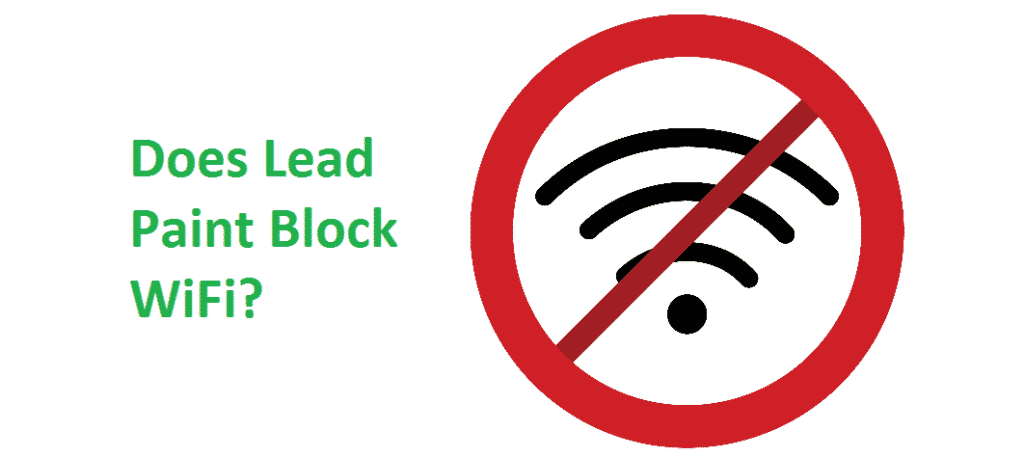
Devices connected through Wi-Fi do not need cables, that is because these devices use radio waves to communicate.
But you might have noticed how distance and interference affect the strength of your Wi-Fi signal.
The Wi-Fi signal which is a radio wave belongs to the family of electromagnetic radiations. The most well known electromagnetic radiation is light, and it’s well established that certain materials can interfere with the path and intensity of light. For example, tinted glass can weaken the visible light that falls upon it. Similarly, a wooden board can outright block the visible light from traveling any further.
Radio waves that lie in the extreme left of the electromagnetic spectrum with a frequency ranging from 2.4-5 GHz are also prone to external interference.
Does Lead Paint Block WiFi?
We know that other radio waves with a similar frequency can affect your Wi-Fi signal. But what about lead paint, does it affect your Wi-Fi signal?
Any type of conductive material can block radio waves. Copper and lead both are conductive materials so we can assume that lead can block your Wi-Fi signals.
But it’s not practical to use lead for shielding.
That’s because lower frequency waves like a radio wave require a thick conductive material to block them. Yet lead is more expensive than copper. So its quite rare to see lead being used as a shield.
Thus the answer to the question does lead paint block Wi-Fi is yes it does, but its less likely to be the perpetrator.
A house will have at most a few coatings of lead paint if it went through multiple renovations. This amount of paint can at most slightly interfere with your Wi-Fi network. It’s not remotely close to outright blocking it.
A few good alternatives that can block radio waves are dielectrics, copper, and aluminum.
Dielectrics although can’t fully block a radio wave they can, however, reflect and absorb a tremendous amount of its power.
A dielectric when in contact with a radio wave will absorb a portion of its power transforming it into heat energy. This heat energy is then dispersed.
A few commonly used dielectrics are wood, ceramic, paper, plastic, Teflon, and pure liquid water.
The electric conductors work differently. These metallic conductors capture and reflect the electromagnetic waves that come in contact with their surfaces. But similar to a dielectric they also require a sufficient amount of thickness to fully block all types of electromagnetic radiations including the radio wave.
Thus it can be concluded that your Wi-Fi connection which suffers from an occasional disconnect has nothing to do with the lead paint on your walls. Its either other radio waves interfering with it or it can be the copper pipes you had installed for water supply. But rest assured, if the problem truly arises because of lead paint, you can have it removed in a single day. Or you can make use of a cell repeater to boost your Wi-Fi signal.